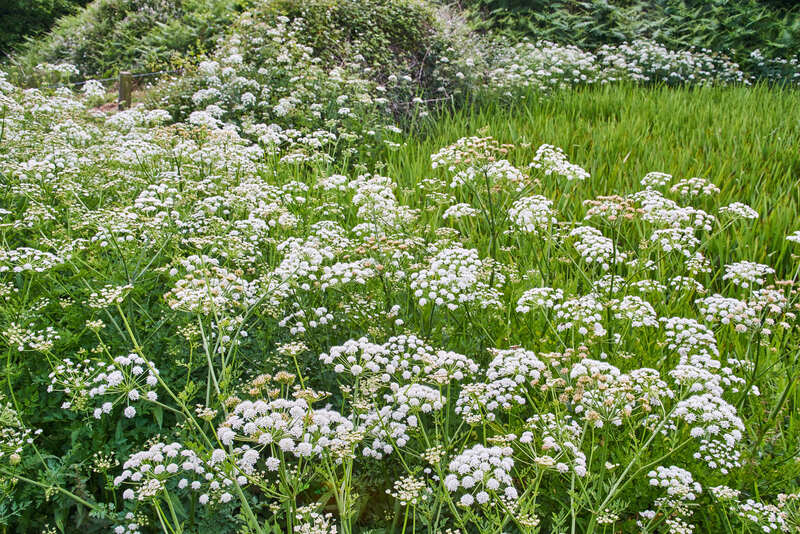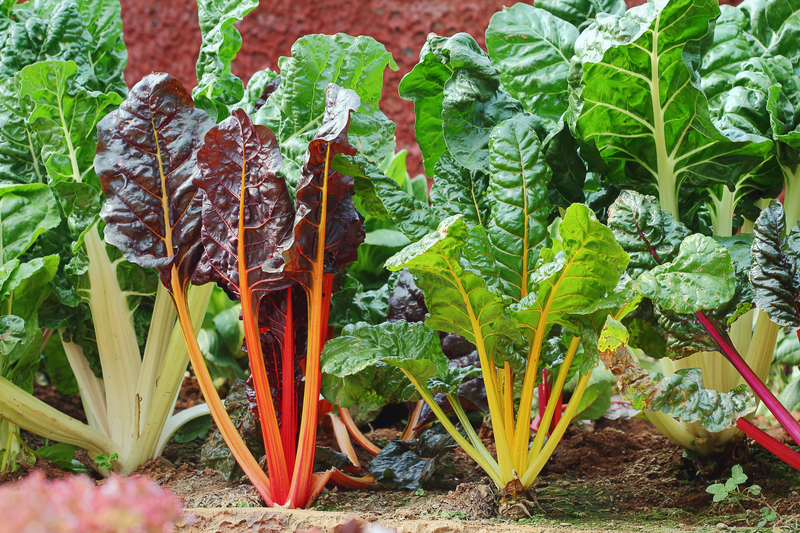Transform Small Spaces with Vertical Gardening
Posted on 01/07/2025
Transform Small Spaces with Vertical Gardening: The Ultimate Guide for Small Spaces
Living in an urban area or having a compact home shouldn't stop you from creating your dream green space. Vertical gardening offers a creative and space-saving solution to grow an abundance of plants--beautifully and efficiently. Whether you have a patio, balcony, small backyard, or even a sunny wall indoors, vertical gardening for small spaces can truly transform your environment. In this comprehensive guide, we'll explore everything you need to know about utilizing vertical gardens, including their benefits, design ideas, and practical tips for success.

Why Embrace Vertical Gardening in Small Spaces?
The Benefits of Vertical Gardening
Making the most of limited square footage is a necessity for many urban dwellers and homeowners. Vertical gardening is a gardening method where plants grow upward on structures rather than outward on the ground. Here's why it has become so popular:
- Maximize Space: Utilize vertical surfaces such as walls, fences, and even indoor shelving to grow more plants.
- Improve Air Quality: More greenery means cleaner air and a fresher environment--even indoors.
- Boost Aesthetics: Vertical gardens add a lush, vibrant backdrop to patios, balconies, and city rooftops.
- Increase Privacy: Living walls can function as natural screens, adding privacy without the need for bulky structures.
- Enhance Mental Well-being: A closer connection to nature is proven to relieve stress and boost mood.
- Grow More Food: Even a small vertical garden can yield plenty of herbs, vegetables, and fruits.
Who Should Consider Vertical Gardens?
Vertical gardening is ideal for:
- Apartment dwellers with balconies or minimal outdoor space.
- Homeowners hoping to maximize their yard's potential.
- Office spaces in need of indoor greenery.
- Anyone wanting to add visual interest to walls, fences, or facades.
Getting Started: Planning Your Vertical Garden
Assess Your Space
First, determine the best location for your vertical garden. Sunlight is the most critical factor, so observe how much direct or indirect light your chosen spot receives.
- South-facing walls get the most sunlight--ideal for most edible and flowering plants.
- East or west-facing areas provide moderate sun--great for herbs and shade-tolerant plants.
- North-facing spaces are best suited for low-light or shade-loving varieties.
Also, consider proximity to a water source, structural support, and overall accessibility for maintenance.
Choose Your Vertical Garden Type
There are several types of vertical gardens, each with their own style and benefits. Here are some popular vertical gardening systems to consider:
- Wall Planters: Modular panels or pockets that mount to any wall, perfect for both outdoor and indoor gardens.
- Freestanding Towers: Vertical planters or stacked pots that can fit into corners or small patios.
- Trellises and Arbors: Classic supports for climbing plants like cucumbers or flowering vines.
- Hanging Gardens: Pots or containers suspended from hooks, beams, or balconies.
- Pallet Gardens: Repurposed wooden pallets create rustic, affordable vertical options.
- Living Walls: Professional systems using hydroponics or soil medium, ideal for lush indoor displays.
Selecting the Right Plants
Select plants that thrive in your local climate and suit your light conditions. Top choices for vertical gardening in small spaces include:
- Herbs: Basil, mint, parsley, chives, and cilantro are compact, fast-growing, and add fresh flavor to your kitchen.
- Salad Greens: Lettuce, arugula, spinach, and kale grow quickly and can be harvested repeatedly.
- Strawberries: Perfect for hanging baskets or wall pockets.
- Trailing Plants: Pothos, ivy, philodendron, and spider plants add dramatic greenery indoors and outdoors.
- Succulents & Cacti: Low-maintenance and great for sunny walls.
- Edible Flowers: Nasturtiums and violas add color and culinary flair.
- Climbing Vegetables: Peas, beans, cucumbers, tomatoes thrive on trellises and cages.
Tip: Mix and match for maximum appeal and function.
Design Inspiration: Creative Ideas for Vertical Gardening
DIY Pallet Planters
Old shipping pallets are inexpensive and adaptable for vertical gardens. Attach landscaping fabric to the back for soil retention and fill the slats with soil and bedding plants for a rustic, eco-friendly touch.
Shoe Organizer Garden
Repurpose a canvas or plastic shoe organizer into a quirky wall planter. Hang on a door or fence and fill the pockets with herbs or flowers--perfect for balconies and even indoors!
Hanging Basket Columns
Stack hanging baskets vertically, either suspended from a tall pole or along a wall. Plant strawberries, trailing herbs, or colorful annuals for a cascading effect.
Ladder Planters
Lean a wooden ladder against a wall and place pots or trays on each rung. Paint or stain the ladder to match your decor for a chic, custom look.
Gutter Gardens
Old rain gutters can be mounted horizontally along fences or railings. Cut to size and drill drainage holes for a slim, modern planter--great for lettuces, herbs, or succulents.
Living Art Walls
Frame a selection of small potted plants or succulents for an eye-catching, living piece of artwork. These are especially striking indoors and can double as a natural air filter.
Step-by-Step: How to Build a Basic Vertical Garden
Materials Needed
- Vertical planter system (wall pocket, stackable pots, etc.)
- Quality potting mix
- Plants of your choice
- Watering can or hose with a fine spray
- Wall mounting hardware or support frames
- Optional: Drip irrigation kit for convenience
Assembly Instructions
- Install your vertical garden structure according to the manufacturer's instructions or your DIY design.
- Fill each pocket or pot with potting soil, ensuring good drainage.
- Arrange your plants by their light and water needs (putting thirstiest at the bottom where water gathers).
- Water in well, letting excess drain away to avoid root rot.
- Maintain regularly: Water as needed, fertilize occasionally, and prune for shape and health.
Maintenance Tips for Thriving Vertical Gardens
- Consistent Watering: Vertical containers dry out faster; check soil moisture regularly. Self-watering or drip irrigation systems can help.
- Regular Feeding: Use a balanced liquid fertilizer every 2-4 weeks during the growing season.
- Pruning and Harvesting: Remove dead or yellowing leaves and harvest herbs and greens often to encourage new growth.
- Monitoring for Pests: Inspect plants regularly for aphids, mites, or fungal issues and treat promptly.
- Soil Renewal: Refresh potting mix and rotate plants seasonally to keep your garden healthy and productive.
Common Questions About Vertical Gardening
Can I grow a vertical garden indoors?
Absolutely! Many indoor spaces with adequate light are perfect for vertical gardens. Use grow lights if natural sunlight is limited. Indoor herb gardens, succulents, and leafy greens are top choices.
What is the best soil for vertical gardens?
Choose a high-quality, lightweight potting mix with good water retention and drainage. Mix in some compost for added nutrition and structure.
How often should I water a vertical garden?
It varies by plant, sunlight, and system, but most vertical garden setups need watering more frequently than in-ground beds--often daily during hot weather.
Can vertical gardens be used for vegetables?
Definitely! Many vegetables, including lettuce, beans, cucumbers, peas, and even small tomatoes, adapt well to vertical growing with the right support.
Will vertical gardens damage my walls or fences?
If properly installed and watered, most structures are safe. Use waterproof barriers between your wall and planter for added protection if needed.
Eco-Friendly & Sustainable Living with Vertical Gardening
Besides optimizing limited spaces, vertical gardening also supports a more sustainable lifestyle. Here's how:
- Reduces Urban Heat: Green walls naturally cool and insulate buildings.
- Supports Pollinators: Add flowering varieties to attract bees and butterflies even in city centers.
- Improves Biodiversity: Introduce a variety of plants, fostering habitats for beneficial insects and birds.
- Conserves Water: Drip irrigation and close planting styles reduce water waste.
- Upcycles Materials: Use repurposed pallets, bottles, or gutters to reduce landfill waste.

Vertical Gardening Success Stories: Transforming Small Spaces
From micro-apartments to cozy patios, real-life vertical gardens are proving how impactful this approach can be:
- In London, a couple transformed their 3-foot balcony into a lush herb and veggie vertical oasis, producing fresh salads all summer long.
- A New York apartment dweller used a shoe organizer vertical garden to enjoy fresh basil and mint year-round, with zero backyard space.
- In San Francisco, a rooftop fence became a retreat with a living wall of ferns, ivies, and edible flowers--improving privacy while supporting pollinators.
Conclusion: Bring Your Small Space to Life with Vertical Gardens
Vertical gardening for small spaces is more than just a trend--it's a smart, sustainable solution for gardeners of all levels. By thinking upward, you can turn every wall, fence, or corner into a thriving garden, no matter your square footage. With the right planning, creative ideas, and ongoing care, your small space can become an inspiring, eco-friendly retreat.
Ready to get started? Gather your supplies, plan your garden, and enjoy the beauty and productivity of a flourishing vertical space. Transform your home, apartment, or office today with the magic of vertical gardening!
More Tips & Resources
- Explore local nurseries for vertical gardening kits and plant suggestions.
- Share your progress on social media with #VerticalGardening and inspire your community!
- Check out online tutorials and classes for detailed DIY instructions.
With a little creativity and care, your small space can become a lush, vertical paradise.

